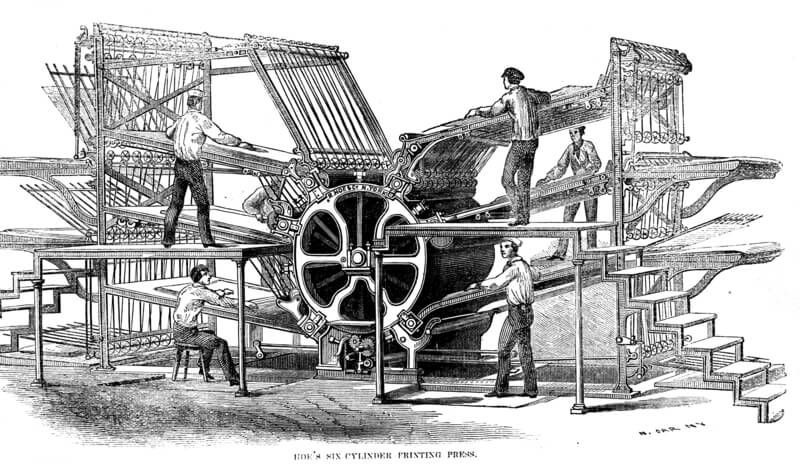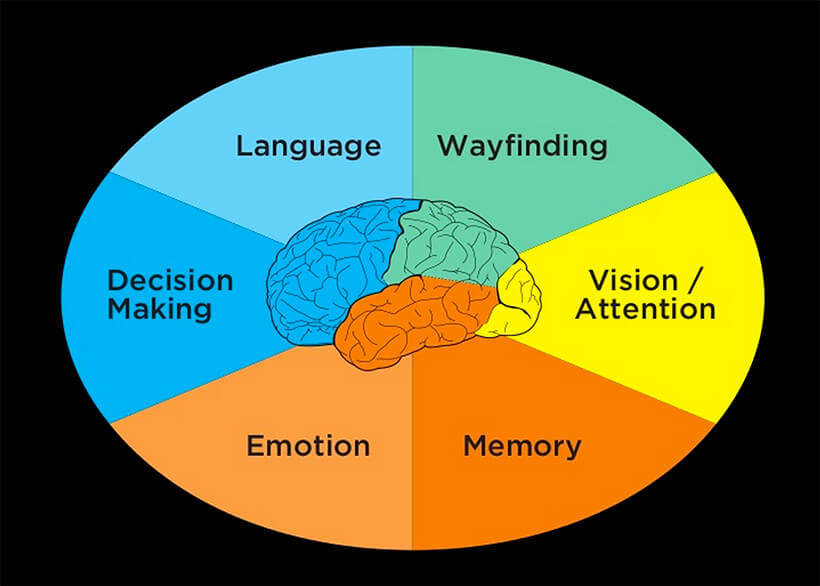Try to recall the last time an everyday experience really frustrated you. It might have been a door that you thought you could push but really had to pull. Perhaps you didn’t know which button to press at the gas pump. Or maybe you couldn’t even figure out how to change the time on your new microwave. These pains happen to us on a daily basis, despite the fact that those objects were designed by passionate people who cared about the things they built. What’s going on here?

User Experience (UX) Design is the discipline that seeks to right those wrongs. It’s a broad field that requires designers and stakeholders to be mindful of how actual human beings perceive and use their products and whether it is adding value to their lives. This requires an understanding of how the brain works because that’s where the experience actually happens: not on the outside, but within our minds.
The guide that follows is a bit of a crash course that outlines some key UX concepts and ways to create better interactive products. By observing and listening to users, designers are able to reduce the friction between intention and outcome. This in turn transforms an audience into brand loyalists who advocate for products, experiences, and ethos.
UX Is Really About Ergonomics
The practice of designing for the end-user is nothing new. Despite the fact that a relatively new layer of digital, interactive experiences now complicates our physical world, we’ve been conscious of the way our tools shape our internal faculties for millennia. The Industrial Revolution during the 19th century began to consider the physical as well as psychological impact that machines had on factory workers. This new study of Ergonomics (coined in 1857) sought to increase efficiency, standardize processes, and alleviate stress at the time, which lead to a broader focus on human factors in the context of designing tools for a desired behavior.
Related: What is Human Factors and Ergonimics?

Understanding the context of the user’s environment is crucial. Barriers based on anatomy, aesthetic preferences, and subconscious tendencies can greatly affect how we design products or systems. The term “User Experience” is actually a relatively new term that was coined by cognitive scientist Donald Norman in 1993. He wanted a phrase that was broader than words like interface and usability to describe a holistic understanding of the bigger picture. His book The Design of Everyday Things introduced and popularized many of the concepts and metrics UX designers use to measure how effective their designs are.
I invented the term because I thought human interface and usability were too narrow. I wanted to cover all aspects of the person’s experience with a system, including industrial design, graphics, the interface, the physical interaction, and the manual. -Donald Norman
Why People Are Hard to Design For
In order to begin to design and advocate for the user experience, you need to know how flawed our human minds and bodies actually are. We like to see ourselves as the pinnacle of evolution, and believe that we are in complete control of what we experience and how we process our thoughts and feelings. But the reality couldn’t be further from the truth. Our behavior is shaped by all sorts of cognitive biases, physical limitations, outside influences, and unfounded beliefs.
Any experience we have is inherently multi-dimensional and multi-sensory. When we interact with an object or interface, multiple parts of the brain are taking in information simultaneously, filtering out that which is unnecessary or redundant.
This neural conversation colors our perception of the world. UX practitioner John Whalen at Brilliant Experience describes it as the “Six Minds Approach”: seeing interaction as a dialogue between the different parts of the brain. It points to the fact that because users are actively aware of only a small portion of their consciousness, designers have to consider deeper motivations and processes in order to create a great experience.

There are a million ways to find out whether your users are engaging with your products the way you intend, but we’ll only cover a few here. Methods such as usability tests, reviewing analytics data, and having an iterative design approach can certainly help, but I’d argue the biggest boon to developing a great UX is shifting your point of view to that of empathy for the user.
Understanding the reality of how the mind works, and that each one is unique, can ensure your end product remains positive and valuable to the end-user. People are emotional. They get distracted easily. They crave information and meaning. The more you know about them, the better prepared you’ll be.
So, what are some things you can do right away? Below are just a few methods that are easy to keep in mind as you advocate for the user’s experience.
How to Develop a Strong UX Practice
Observe
Human memory is much more inaccurate than we care to admit, so the more you can actually watch people using your product, the better. Heatmaps, eye-tracking, and user testing can all be conducted on a budget – just make sure you identify your actual users first.
Ask the Right Questions
Don’t be afraid to dig deep. Find out what makes your users afraid, hopeful, or ambitious. Look beyond the day-to-day tasks they perform and try to get to the emotional underpinnings that may be influencing a user’s life.
Listen
Step back and try to understand what someone is really saying. Pay attention to the words they choose to use and the verbal cues they give off. Keep in mind a user can also be a stakeholder, so value every voice in the conversation.
Sketch
Having a lean approach to your design process means you’ll be better able to hit the ground running. Doodle interactions on napkins. Get out into the real world. Collaborate on a whiteboard or with Post-Its. Try not to be as polished as you work out the key interactions you want your users to make.
Admit When You’re Wrong
This may be the hardest one of all. UX design is a field in which you have to be willing to suspend your ego and preconceptions. You have to wait for the data and let the results guide your next move. People can be unpredictable in many surprising ways, which is part of the reason the field is so dynamic.
Allowing the UX to Emerge Naturally
By doing all the above, the UX will make itself known. I know this sounds a bit too Zen, but once you see UX as a point of view rather than a rigid step in the system, the user’s actions become the basis on which you execute your ideas.
UX Design is vast. It encompasses almost all fields of design and cognitive psychology. It glues the worlds of art and science together and allows us to see things the way they actually are. Without considering the end-user’s journey, anything that gets built misses the mark. As our industry grows, UX design becomes impossible to ignore, but thankfully we have a wealth of research, expertise, and history off of which to build.
